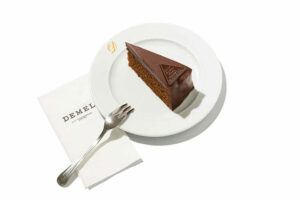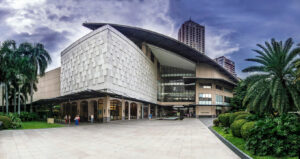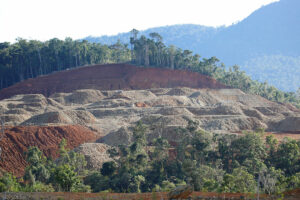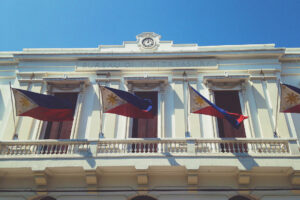Eating across a (former) empire

By Joseph L. Garcia, Senior Reporter
THE Austro-Hungarian Empire has been gone for more than 100 years, but some vestiges of its greatness still lie in its restaurants. Austria’s contributions to cuisine are hard to ignore: a lot of famous French pastries, collectively called Viennoserie, take the category’s name from Austria’s capital; not to mention popularizing coffee culture in Europe. As for Hungary, it added much-needed spice to the culinary map, thanks to its widespread use of paprika.
THE OLDEST COFFEE HOUSE IN VIENNACafé Frauenhuber is supposed to be Vienna’s oldest coffee house, standing since 1824. The building is much older, though: a plaque outside states that in 1788, Franz Jahn, personal chef of the Empress Maria Theresa, had founded a restaurant there. Mozart and Beethoven both performed there, in 1788 and 1797, respectively. And before that, it was a bathhouse (according to a perfumer we met there for coffee).
As we sat among the velvet damask seats, parquet floors, and crystal chandeliers, a white tablecloth was whipped out and folded for us by the server. Among the guests were several tired-looking people in black tie (we guessed that they were performers in the various classical concerts all across the city), sharing space with curious tourists in jeans.
On our first visit, we had their Viennese Chocolate, with rum and whipped cream, and it left us almost half-asleep. A second visit bade us to order their goulash, with beef and potatoes, with a Kaisersimmel roll. Filling and intriguingly spicy, the meal and the accompanying aura of history cost €9.10.
We also had Vienna’s most famous dish, the Wiener Schnitzel: veal pounded and fried in batter until it turns crispy. We learned that day that we liked pork better than veal, and we paid €28.90 to find out.
MCDONALD’S — A MODERN EMPIREHa! Bet you weren’t expecting that. The world’s largest fast-food chain, spreading across 100 countries, has unique items across its markets. The McDonald’s in Vienna has the Steakhouse Classic and the Bacon Hamburger Royal with Cheese. Well, it’s hard to distinguish one from the other, but this is what we can say: The beef patties are large, just a few inches away from becoming the size of my own face, and are of an excellent quality. At fast-food prices (neither cost more than €6), they can stand toe-to-toe with any “gourmet” burger here at home (which might sell for twice the price).
The buns are of such excellent texture you’d think they wore makeup, not to mention the wide variety of sauces for dipping fries (we counted curry, Hot Devil spicy sauce, and real Honey Mustard; among others). Suddenly, ketchup in sachets just won’t do anymore.
A TALE OF TWO SACHERTORTESOne of Vienna’s most famous cakes, it was invented by Franz Sacher in 1832, supposedly for politician Prince Metternich. Today, it’s a chocolate cake with apricot jam between its layers, covered in dark chocolate icing, and served with whipped cream.
You’re probably waiting for us to say that we tried it in Hotel Sacher, the luxury hotel founded by Franz Sacher’s son. Nope: the long lines and the expensive reservation fees put us off. Instead, we tried it at Kurkonditorei Oberlaa, a popular chain in Austria (one of its flagship locations happened to be across the street from our hotel) and at Demel, a pastry shop founded in 1786 and supplier to the Viennese Imperial court. Demel also faced a legal battle with the aforementioned Hotel Sacher due to its own claims as the origin of the Sachertorte (it was settled out of court).
The Sachertorte at Oberlaa had a sugary chocolate shell and was light and refined. Demel also had long lines, thanks to its reputation and its fame with the Instagram crowd. They had a special window for coffee orders and Kaiserschmarrn, a sweetened pancake supposedly a favorite of Emperor Franz Joseph I; customers took pictures as soon as the paper cone containing them popped out of the window.
Compared to the cake at Oberlaa, Demel’s version had a milder and more well-rounded chocolate flavor and was more moist and dense. Oberlaa’s was drier, but had a more intense flavor. We ordered Franziskaner coffees at both restaurants (a sister of the Cappucino, which also takes its name from monks’ habits, of a different order): espresso and milk, topped off with generous amounts of whipped cream. Hats off to Demel, their coffee was richer and creamier.
THE MOST BEAUTIFUL CAFé IN THE WORLDWe had a late lunch in what is supposedly the “most beautiful café in the world,” Budapest’s New York Café.
Once populated by the most eminent Hungarian writers of its day, it opened in 1894. World War II halted its operations, and with its 1954 reopening lacked its previous luster. It was restored in 2006 to its former glory, and in 2011, it was bestowed its Most Beautiful award by U City Guide, then again in 2012. Instagram helped retain its reputation through the decades.
Built in an eclectic Italian Renaissance-style, it also had elements of Baroque and Belle Epoque as well. Gilding, marble, bronze, and crystal made their way with the place, and we might also add that almost all the servers had a movie-star beauty to them, emphasized by their formal uniforms.
A string quartet played as we sipped Hungarian goulash (more complex than its Austrian counterpart), which had a fresher, more herbaceous flavor than the goulash from the humbler restaurant we visited earlier in the day. We were only at the smaller restaurant because it was in a mansion sequestered by the previous communist regime from our aristocratic tour guide’s family.
We followed that with Chicken Paprikash, a Hungarian stew (the main stars are in the name). Spicy, perfectly tender; the accompanying spaetzle was perfectly moist and soft and was delightful tossed in the paprika sauce.
There were long lines here as well (eight groups were ahead of us when we arrived after the lunch rush, but we were luckily rushed ahead to the first two slots; the line kept growing as the afternoon wore on), and the food was expensive. Still, it’s not easy to put a price on the glimmer in one’s eye when you’re transported to another, more beautiful world.




